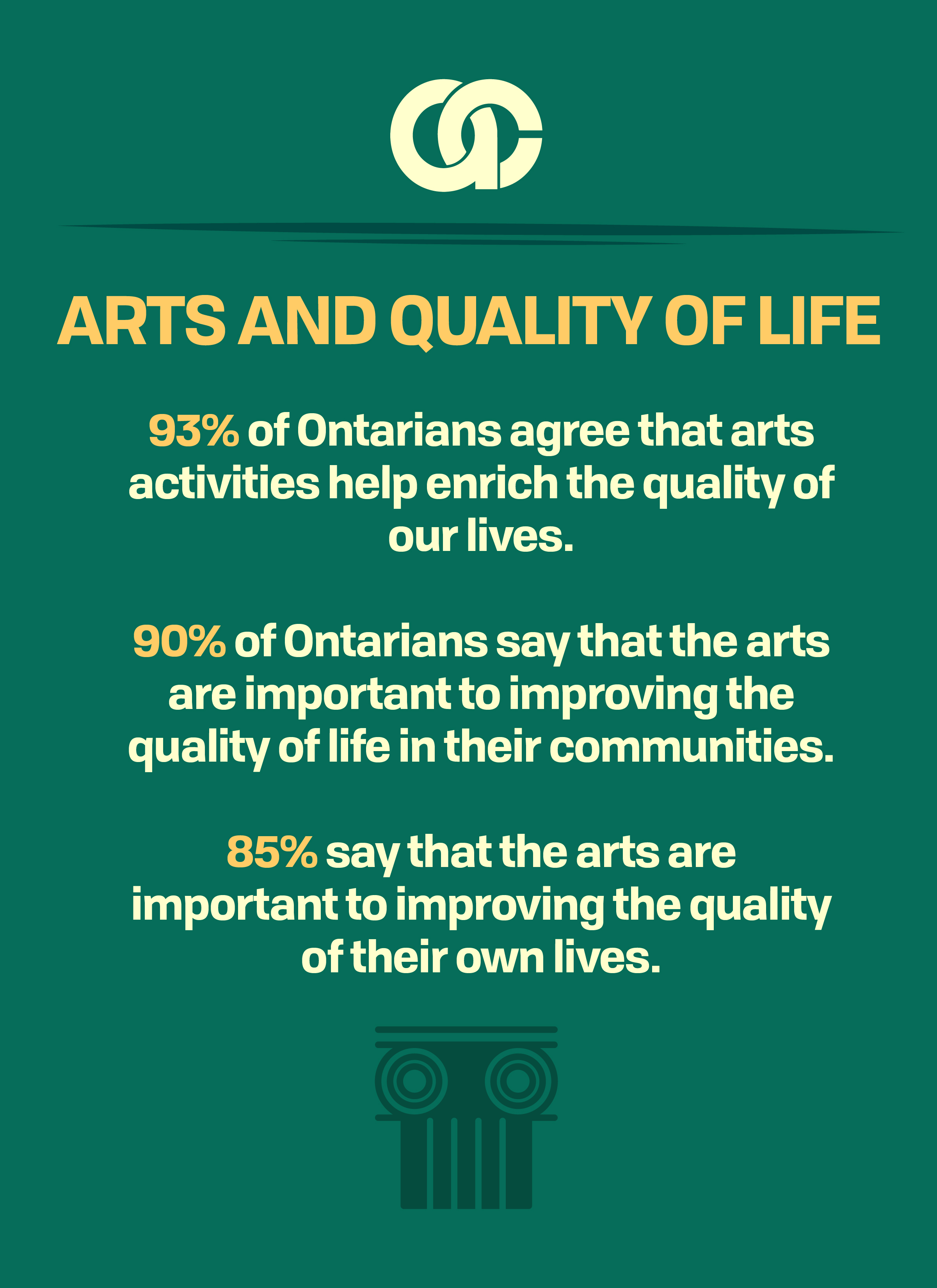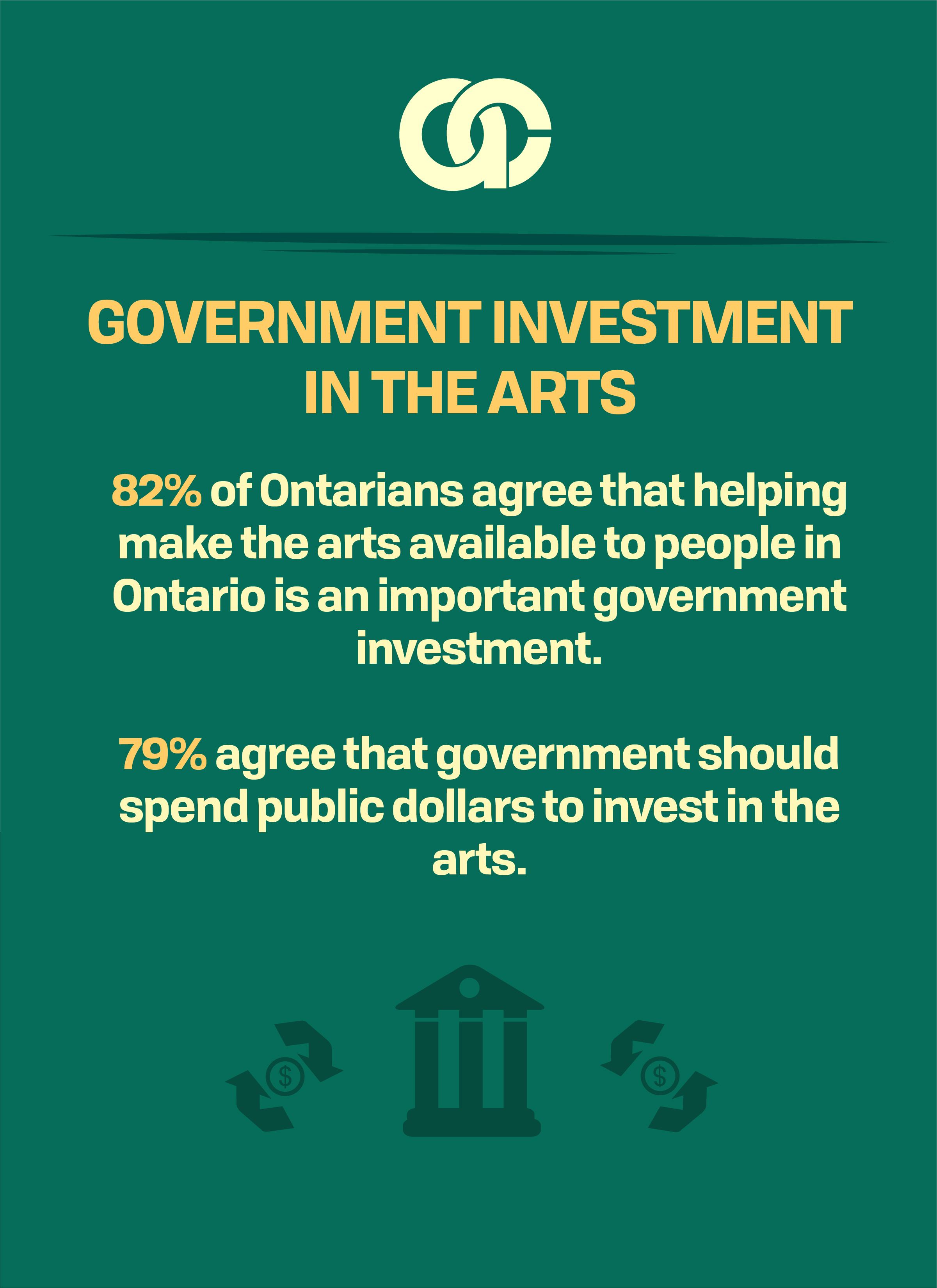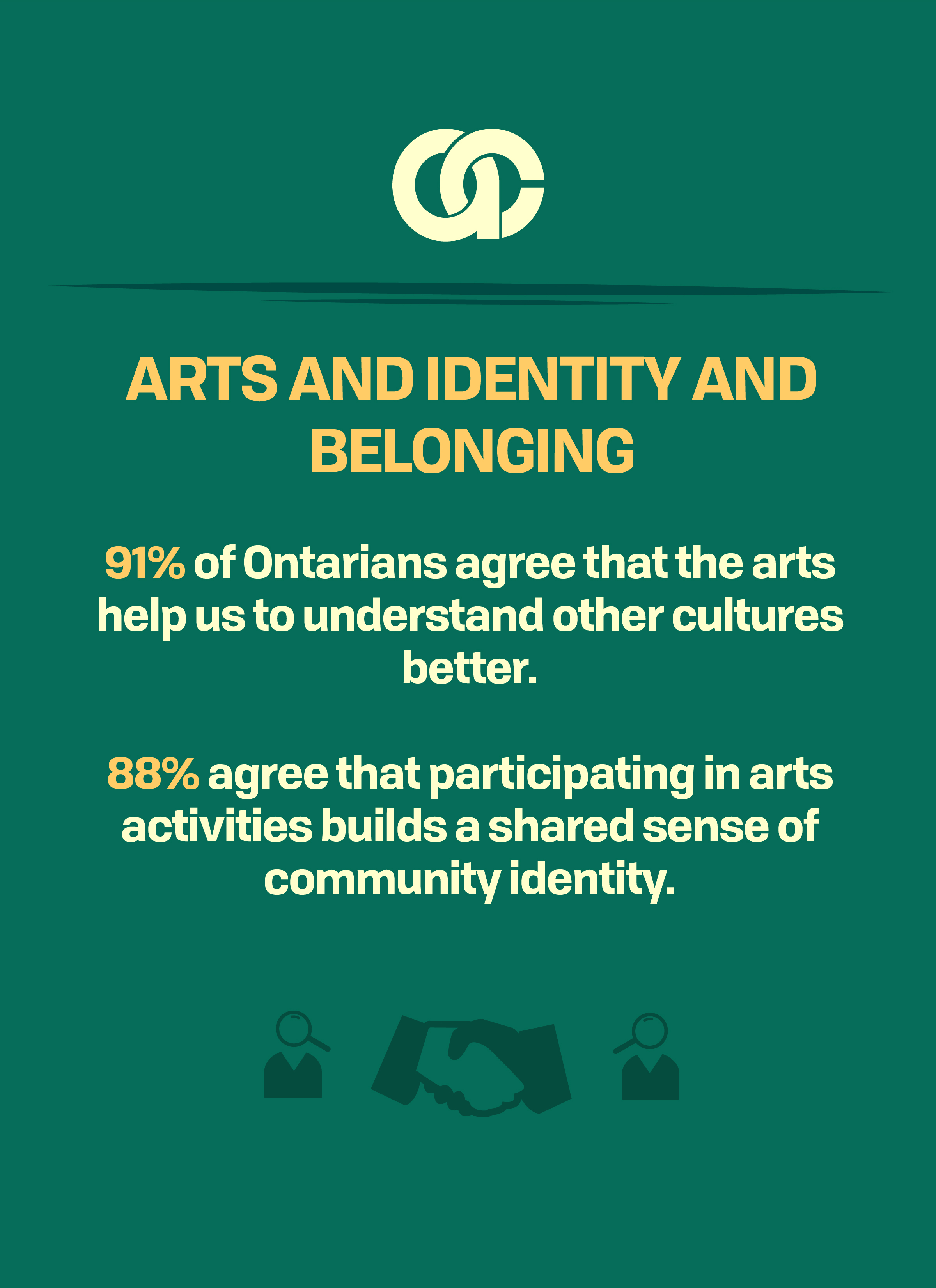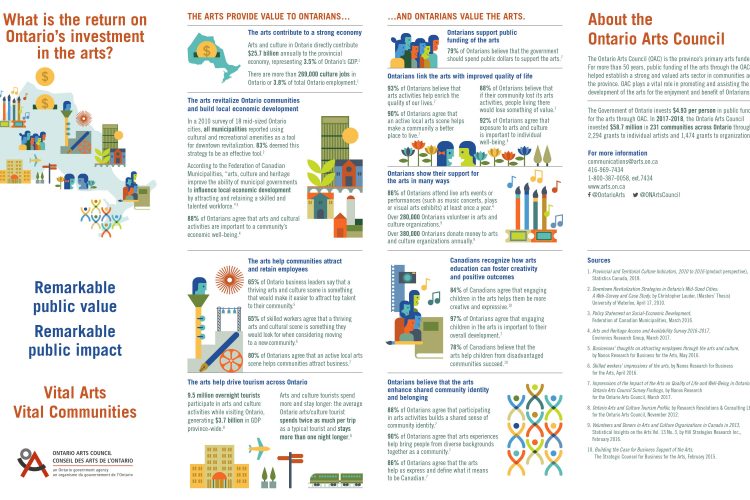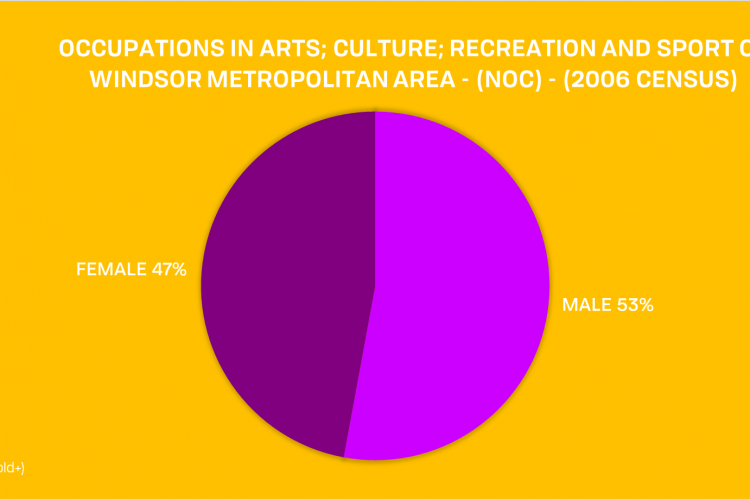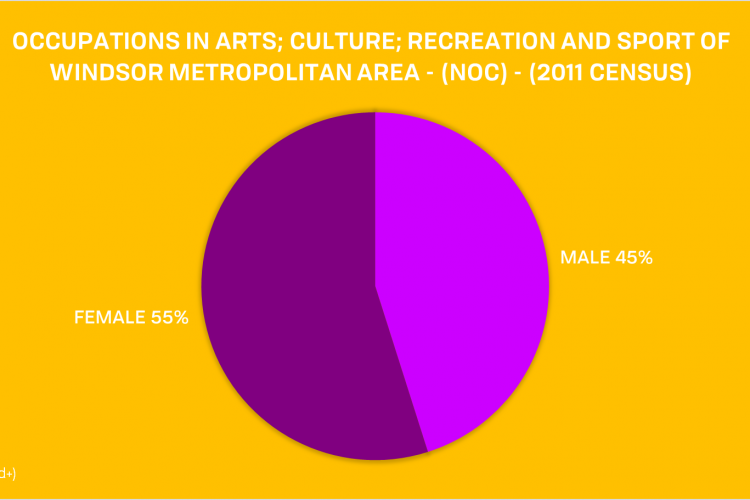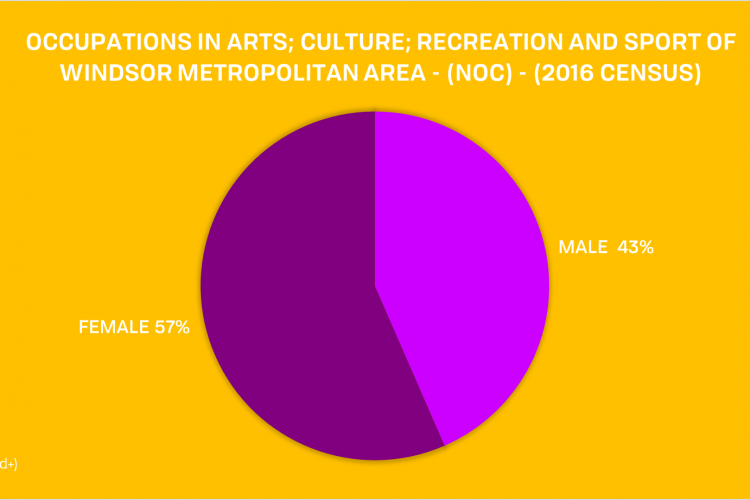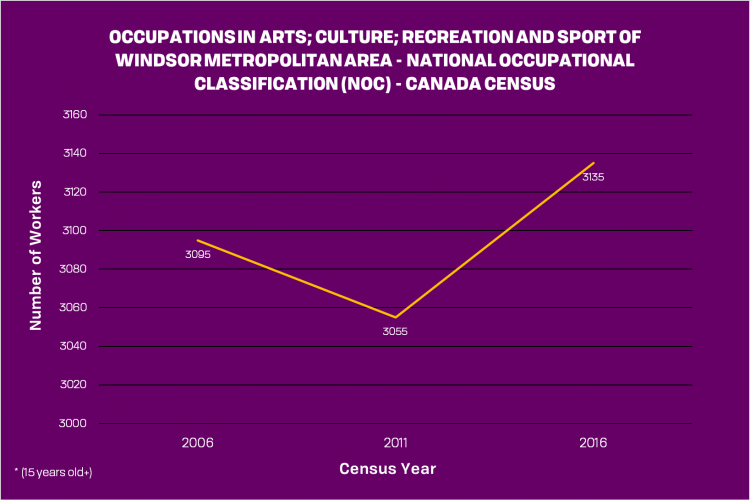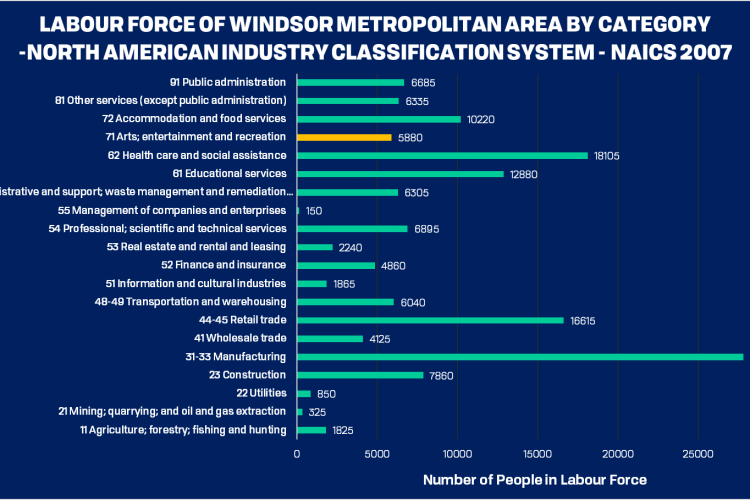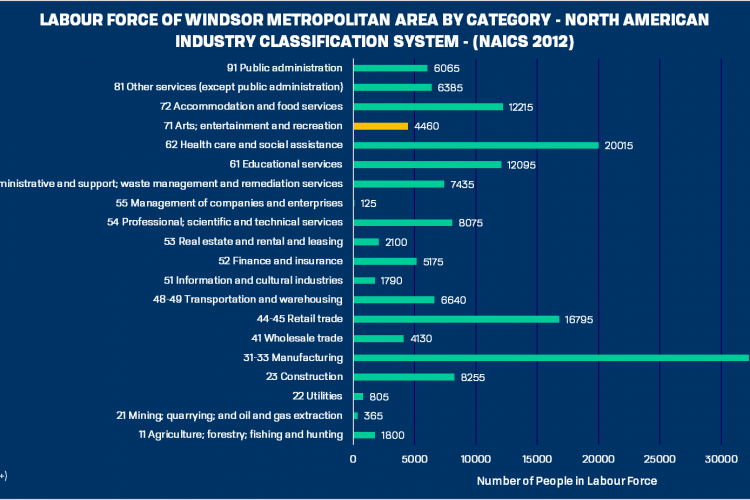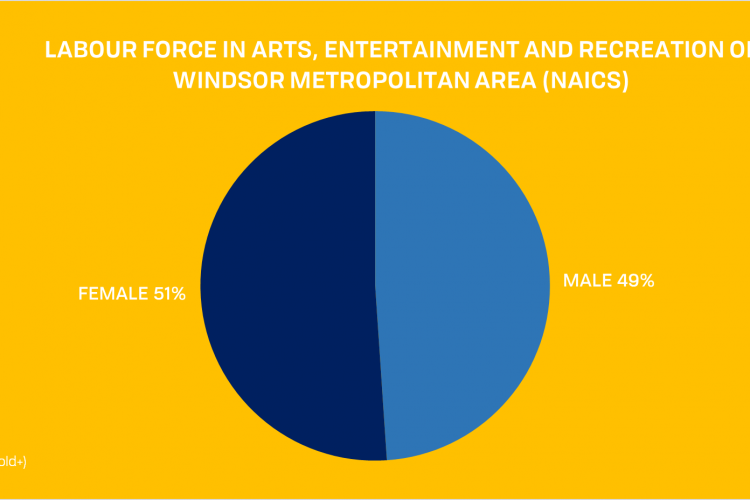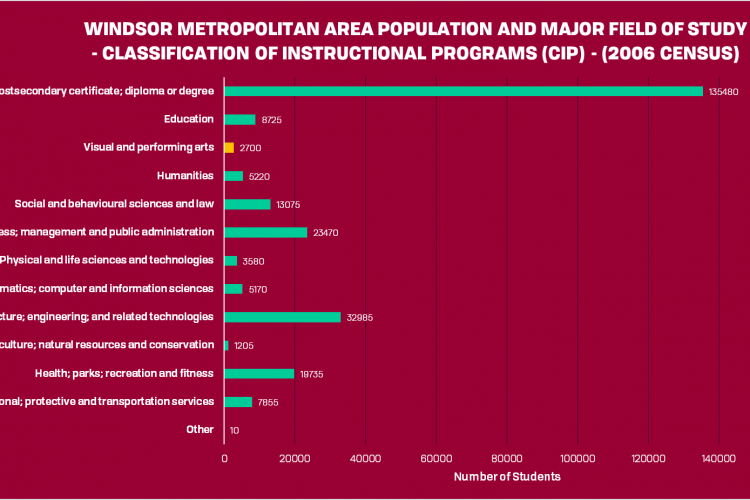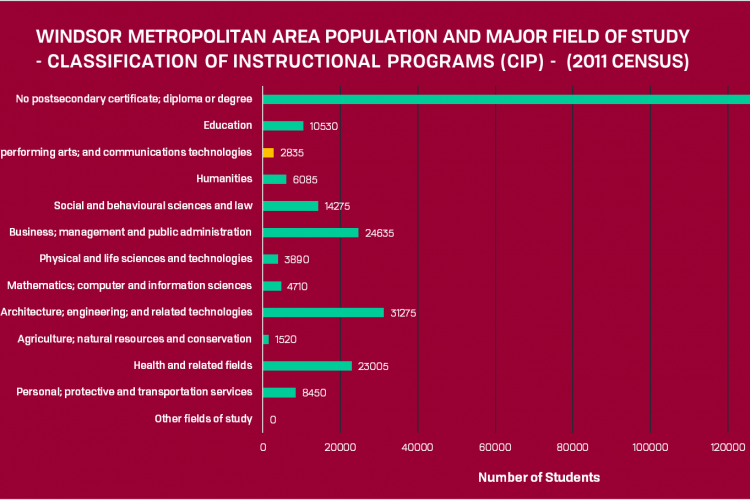
Arts, Culture, and Heritage Sector of Windsor-Essex
Widely known as an automotive manufacturing hub and a border region, Windsor-Essex’s art scene is inclusive of a variety of artistic disciplines and organizations represented by the talent and dedication of its diverse community. Arts and culture create communities that thrive along with preserving its historical significance and forming a unique identity as an industrious prolific city. Through continued support, the ACWR is able to keep its commitment of providing valuable services and programs to the community that increases accessibility for the arts, cultivate skills, and create opportunities for professional development.
Why the Arts Matter: A Social Necessity
Source: Ontario Arts Council
Investing in the Arts: What is the Ripple Effect?
It’s no secret that arts activities can be fun, inspiring, thought-provoking and illuminating. But perhaps not as well-known are the incredible ripple effects that result from the work of Ontario’s professional artists and arts organizations. We’re talking about things like:
- Economic benefits – like funding new works that go on to earn a significant return on our initial investment.
- Attracting tourists – and research shows that when travellers come to experience Ontario’s vibrant arts scene, they stay longer and spend more than the average tourist.
- Creating jobs today – not just in the arts sector, but other sectors that benefit from arts activity.
- Training for the jobs of tomorrow – providing youth with opportunities to learn key skills and launch their careers.
- Offering safe, empowering spaces for vulnerable and marginalized people to feel valued, included and able to achieve their goals.
- Giving you the chance to tell your story – because, whether you’re a lifelong resident of rural Ontario, a new immigrant to suburban Toronto, or an Indigenous knowledge-carrier – your personal history and experiences matter.
Connect with the Ontario Arts Council for more information.
Visit CARFAC Ontario for information regarding the August 2020 brief submitted to the House of Commons Standing Committee calling to support the arts as a key economic driver in the COVID-19 Recovery.
Municipal Benchmark for Service Area: Culture
Through collaboration with participating municipalities, Municipal Benchmarking Network of Canada (MBNCanada) identifies and collects consistent and comparable data on municipal service areas, including Culture Services. The organization defines “Culture Services” as the municipal investment in local artists, culture and heritage organizations. Culture Services enriches quality of life, generates considerable benefits and greatly contributes to a community’s ability to build wealth through innovation and creativity.
Each year, the Board of Directors produces a public report that highlights key results. The 2021 Culture Report presents the investment in grant funding provided for Arts, Heritage and Festivals in seven different municipalities across Canada (Calgary, Hamilton, London, Regina, Sudbury, Windsor, and Winnipeg). The results can be downloaded here:
Why the Arts Matter: An Economic Case
-
Arts and Return of Investment
“Arts and culture products represent $25.7 billion or 3.5% of the province’s gross domestic product (GDP) and over 269,000 jobs. This “product perspective” includes the contribution of culture products (goods and services) produced in both culture industries and non-culture industries.” (Statistics Canada. CANSIM Tables 384-0037 and 379-0028)
The return of investment in the arts for Ontario and the essential value that it brings to the community:
For more information: Ontario Arts Council
The Arts in Windsor-Essex from Statistics Canada
-
Occupational Workforce for Windsor Metropolitan Area (NOC)
2006 Census
Source: 2006 Windsor Census Metropolitan Area
2011 Census
Source: 2011 Windsor Census Metropolitan Area
2016 Census
Source: 2016 Windsor Census Metropolitan Area
Comprehensive Trend of Occupations in Arts; Culture; Recreation and Sport
The National Occupational Classification (NOC) provides a standard taxonomy and framework for occupational information in Canada. Most recently, Arts; Culture; Recreation and Sport comprises approximately 2% of Windsor-Essex’s occupational labour force within the National Occupational Classification. The statistics show that the occupations in the arts for the Windsor Metropolitan Area is an improving, increasing trend. Although there was a major decrease between 2006 and 2011, the number of workers have recovered and increased in 2016 and has even surpassed the levels in 2006. Additionally, there were more male workers in 2006 but after a span of a decade, females have now outnumbered males in 2016.
-
Labour Force of Windsor Metropolitan Area (NAICS)
North American Industry Classification System 2007
North American Industry Classification System 2012
The North American Industry Classification System (NAICS) represents a continuing cooperative effort among Statistics Canada, Mexico’s Instituto Nacional de Estadística y Geografía (INEGI), and the Economic Classification Policy Committee (ECPC) of the United States, acting on behalf of the Office of Management and Budget, to create and maintain a common industry classification system.
Within NAICS, Arts, entertainment, and recreation constitute 3% of Windsor Metropolitan Area’s labour force. Between 2007 to 2012, the arts have decreased by approximately 24%. The NAICS 2017 will be available in the 2020 Census to reveal if it will have the same trend as NOC—an improving, increasing trend.
-
Major Field of Study for Windsor Metropolitan Area (CIP)
2006 Census
Source: 2006 Windsor Census Metropolitan Area
2011 Census
Source: 2011 Windsor Census Metropolitan Area
2016 Census
Source: 2016 Windsor Census Metropolitan Area
Most recently, visual and performing art major comprises approximately 1% with the Classification of Instructional Programs (CIP). Additionally, there are more female majors taking Visual and Performing Art as a field of study than males.
The Windsor- Essex Vital Signs Report 2022
-
About the Vital Signs Report
The Vital Signs® Report is published by the WindsorEssex Community Foundation (WECF) in partnership with Community Foundations of Canada. The Vital Signs® Report is a snapshot of life in Windsor-Essex County that uses local research and data to measure the vitality of our community. By identifying trends and opportunities in eleven key issue areas, Vital Signs® touches on all aspects of our daily lives and focuses on our overall sense of belonging.
Previous years:
Advocating for Arts Education
Current and past research illustrates the positive impacts of arts education for learners of all ages. An increase in academic scores, a decrease in dropout rates, and gaining a greater sense of well-being and quality of life are just a few examples of the benefits of arts education. We are providing educators, learners, and/or advocates for arts education with two documents that go into more detail and outline a variety of reasons why we should include the arts in our everyday learning.


